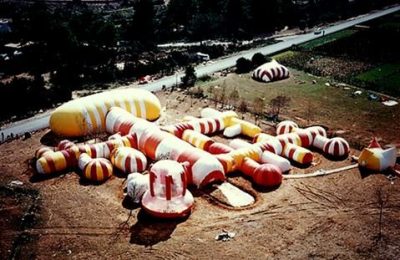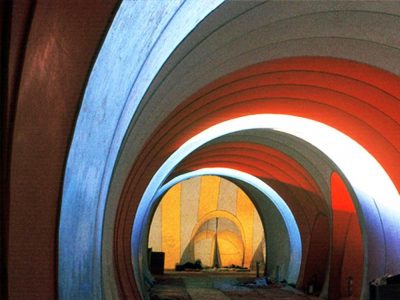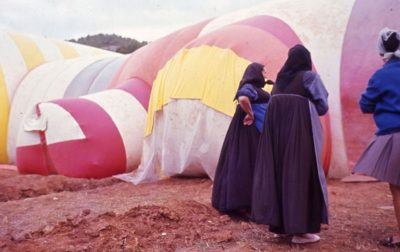INSTANT CITY IBIZA
|
Instant City, floating somewhere between a circus tent and a lysergic installation, was intended to foster socialization and dialogue through communal work and leisure and to promote reflection on new models of sustainable, participatory, and collective behavior. Immersed in the spirit of the time, following the work of groups like Archigram and Haus-Rucker-Co among others, this event was intentionally focused on spontaneous interventions and a lack of structured program. The main idea was based on having several “speaking rooms” where participants had place and time for discussions related to architecture, design, art, and technology. Since the 1930s, Ibiza had been home to a colony of artists and intellectuals who managed to maintain its atmosphere of hospitality towards the arts and the avant-garde, despite dictator Francisco Franco, José Miguel de Prada Poole created the Instant City to provide accommodation for the attending students that didn’t have space in the two hotels on the bay. As Prada Poole wrote on his Letter of the “Ad Hoc Committee”, the intention was to use an inflatable structure taken from the University City of Madrid and allow the students to be part of the construction process and after that, to use it during the days of the congress. Carlos Ferrater and Fernando Bendito, both students of architecture at the time, established the Ad Hoc Committee and drew up the Instant City Manifesto, alongside Luis Racionero. The living installation was one attempt to drag into reality the type of sci-fi-inspired utopian ideas popularized by conceptual experimental architecture practices like Archigram, Superstudio, and Haus-Rucker-Co., which proposed repurposing materials originally developed for military and industrial use in everyday life. Artist Josep Ponsatí installed a large inflatable sculpture in Cala de Sant Miquel, composed of big white plastic balloons, measuring 40 meters in length at one point. Being in constant movement, the organic forms kept changing. It was a different way of looking at art. A 150-meter long flexible green plastic pipe named Vacuflex-3—the work of artists Gonzalo Mezza and Antoni Muntadas—snaked across the beach and floated on the waves, and “Ceremonials”, interactive intervention, were held where attendees wore colored robes and masks. |
















